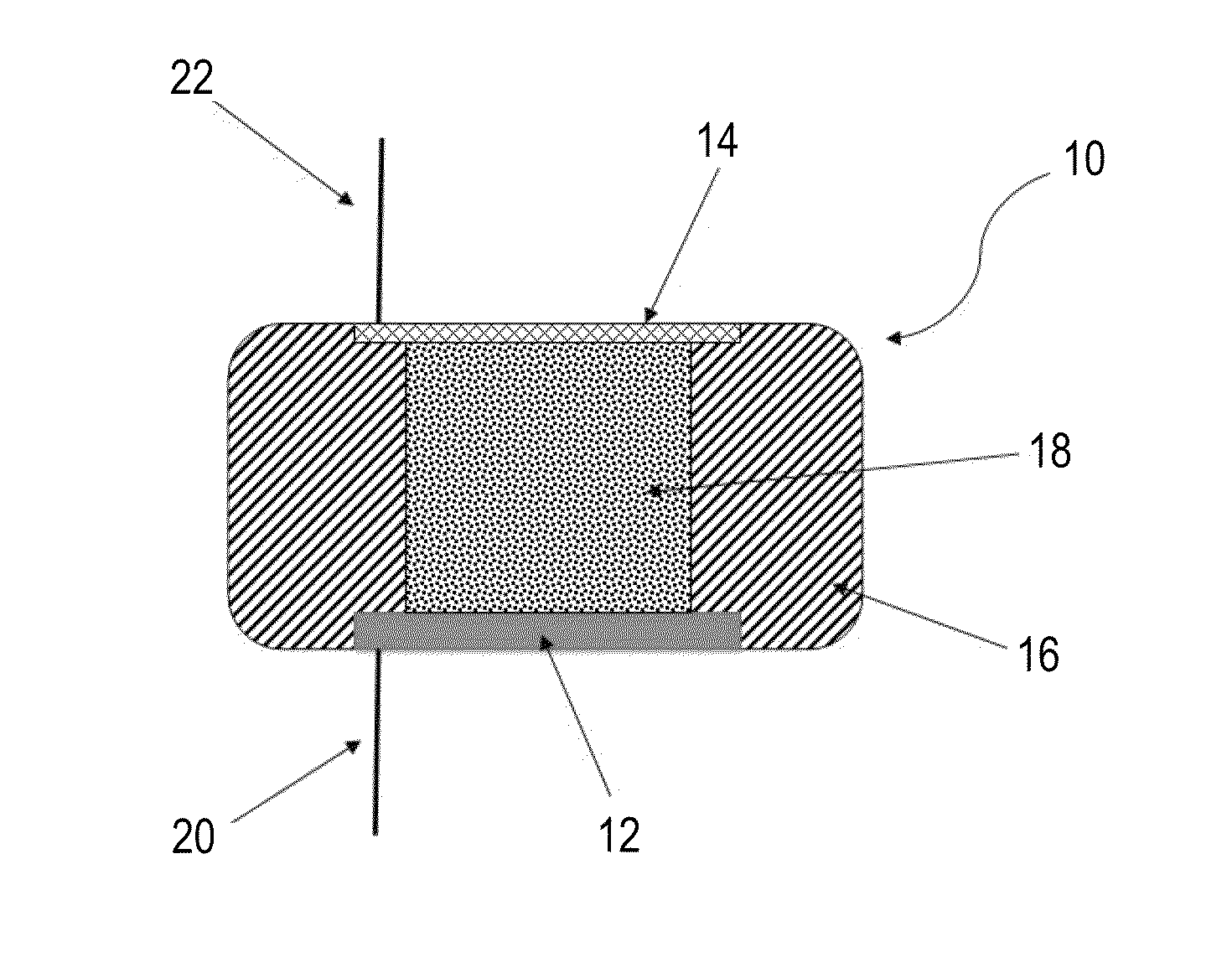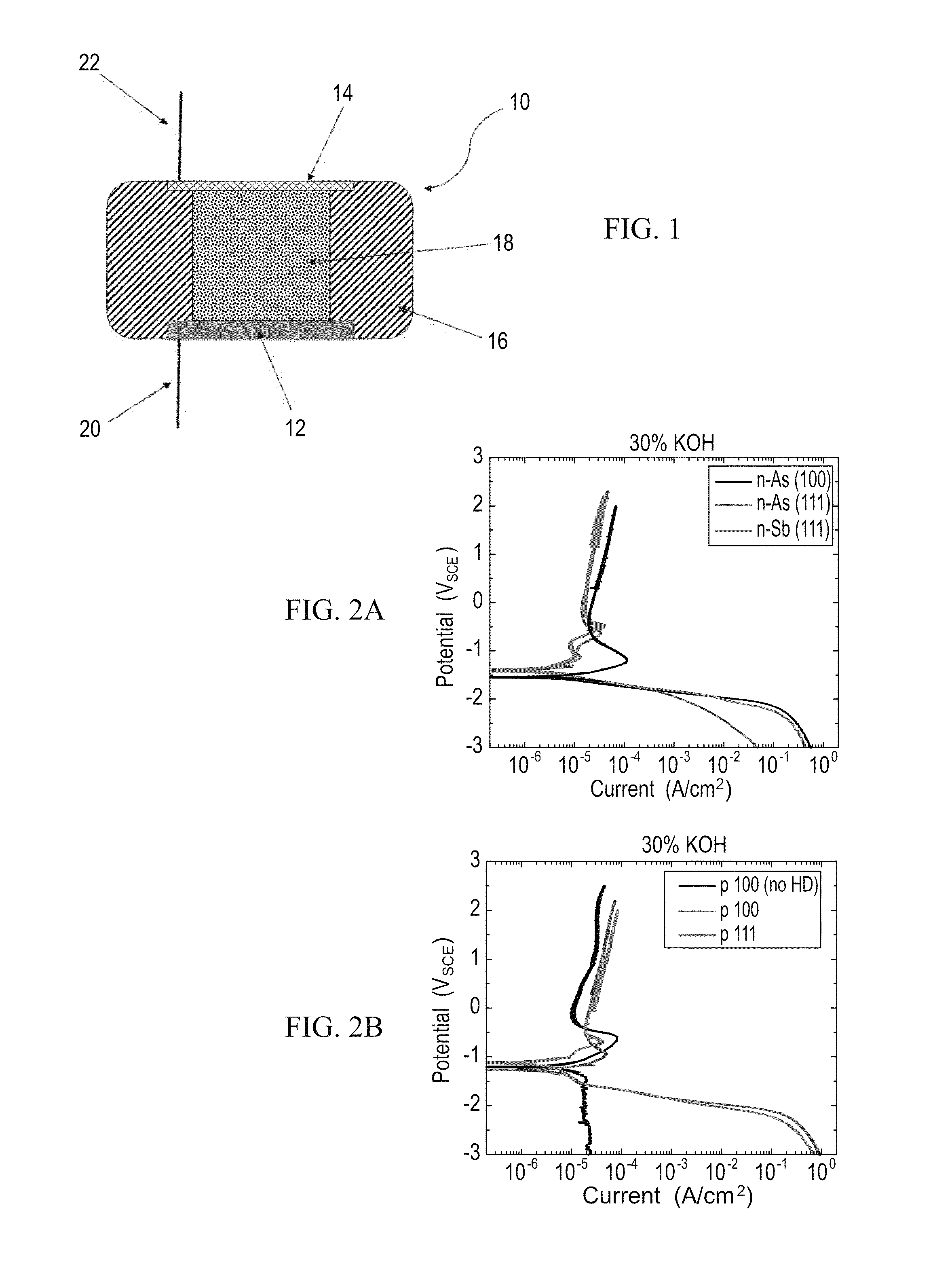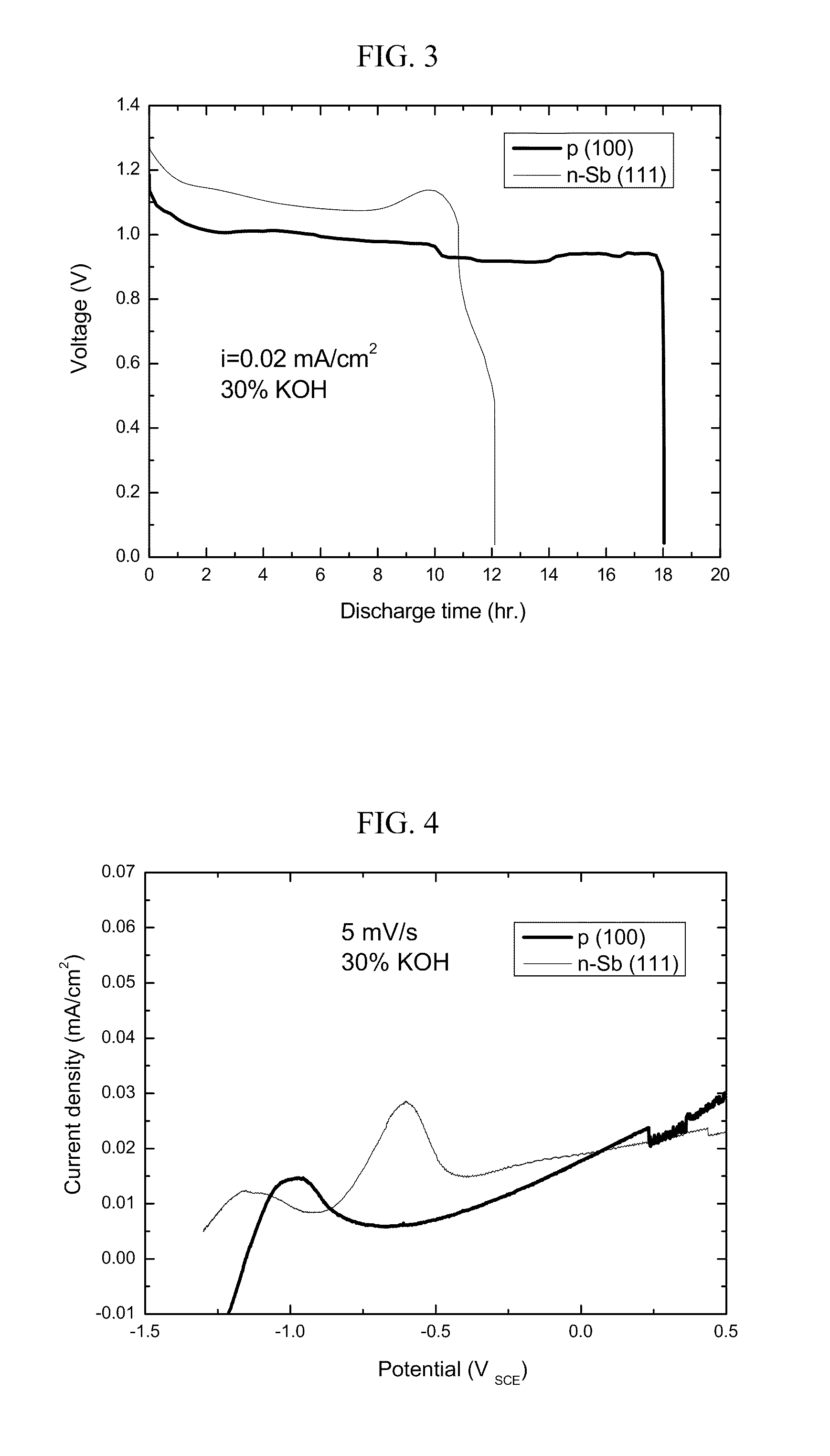Silicon-air batteries
a lithium-air battery and air-cooled technology, applied in the field of energy conversion, can solve the problems of nontrivial challenges associated with a practical lithium-air cell, the consumption of al metal anodes without any usable power output, and the far-off mass production of fuel cells, etc., and achieve the effect of increasing the flow of oxygen
- Summary
- Abstract
- Description
- Claims
- Application Information
AI Technical Summary
Benefits of technology
Problems solved by technology
Method used
Image
Examples
example 1
Silicon-Air Battery Potentiodynamic Measurements
[0143]Potentiodynamic measurements were conducted using an exemplary silicon-air battery constructed according to the prototype cell presented in FIG. 1.
[0144]The electrolyte used is an alkaline solution, based on potassium hydroxide (KOH), which is a conventional electrolyte in such systems. In order to investigate the Si wafer electrochemical behavior in this environment, results from potentiodynamic experiments were obtained, with different silicon wafers and in different solution concentrations. The results for several of these cases are shown in FIGS. 2A-B.
[0145]FIGS. 2A-B present comparative potential-current curves obtained for an exemplary silicon-air battery using n-type wafers (FIG. 2A), and p-type wafers (FIG. 2B), in 30% KOH electrolyte solution, using a scan rate of 5 mV / s, wherein the black curve in FIG. 2A represents the results obtained for a Si [100] n++-doped with As, the red curve for Si [111] n++-doped with As and t...
example 2
Silicon-Air Battery Discharge Curves Measurements
[0147]Discharge curves obtained under galvanosotatic controlled studies are shown in FIG. 3.
[0148]FIG. 3 presents a comparative plot of the discharge curves as obtained for an exemplary silicon-air battery using a silicon [100] p-type wafer (thick line) and a silicon [111] n-type wafer (thin line) in a current density of 10 μA per cm2 against an air cathode comprising carbon / catalyst composite materials pressed onto a nickel mesh.
[0149]As can be seen on FIG. 3, the silicon wafers exhibit typical discharge behavior, with a long period of a potential plateau, ending in a sharp potential drop. The battery could be discharged for a period of 12-18 hours in a current density of 20 μA per cm2, demonstrating the feasibility of a silicon-are battery according to some embodiments of the present invention.
[0150]The matching potentiodynamic measurements for the two wafers are shown in FIG. 4.
[0151]FIG. 4 presents a comparative plot of the potent...
example 3
Silicon / Iron-Air Battery System
[0153]A Fe-air battery system is known in the art, but a Si / Fe-air battery system is being studies and presented herein for the first time
[0154]The natural Fe / Si alloyed powder contains 25% silicon with an average particle size of about 20 μm.
[0155]To serve as an anode and fuel, the active Si / Fe powder was mixed with 30 wt % KOH solution (1:1) and with 0.5 wt % of the gelling agent Carbopol polymer (CAS Number 9063-87-0).
[0156]Typical discharge curve for Si / Fe-air battery system is shown in FIG. 5.
[0157]FIG. 5 presents potential-time curves for Si / Fe powder combined with the oxygen (air) cathode, in 30% KOH solution, wherein the cell was discharged in a current density of 0.1 mA per cm2, presenting a long discharge profile of above 120 hours.
[0158]As can be seen in FIG. 5, although current density discharge is sufficient, power calculations yielded low capacity values.
PUM
| Property | Measurement | Unit |
|---|---|---|
| operating current density | aaaaa | aaaaa |
| working voltage | aaaaa | aaaaa |
| working voltage | aaaaa | aaaaa |
Abstract
Description
Claims
Application Information
 Login to View More
Login to View More - R&D
- Intellectual Property
- Life Sciences
- Materials
- Tech Scout
- Unparalleled Data Quality
- Higher Quality Content
- 60% Fewer Hallucinations
Browse by: Latest US Patents, China's latest patents, Technical Efficacy Thesaurus, Application Domain, Technology Topic, Popular Technical Reports.
© 2025 PatSnap. All rights reserved.Legal|Privacy policy|Modern Slavery Act Transparency Statement|Sitemap|About US| Contact US: help@patsnap.com



